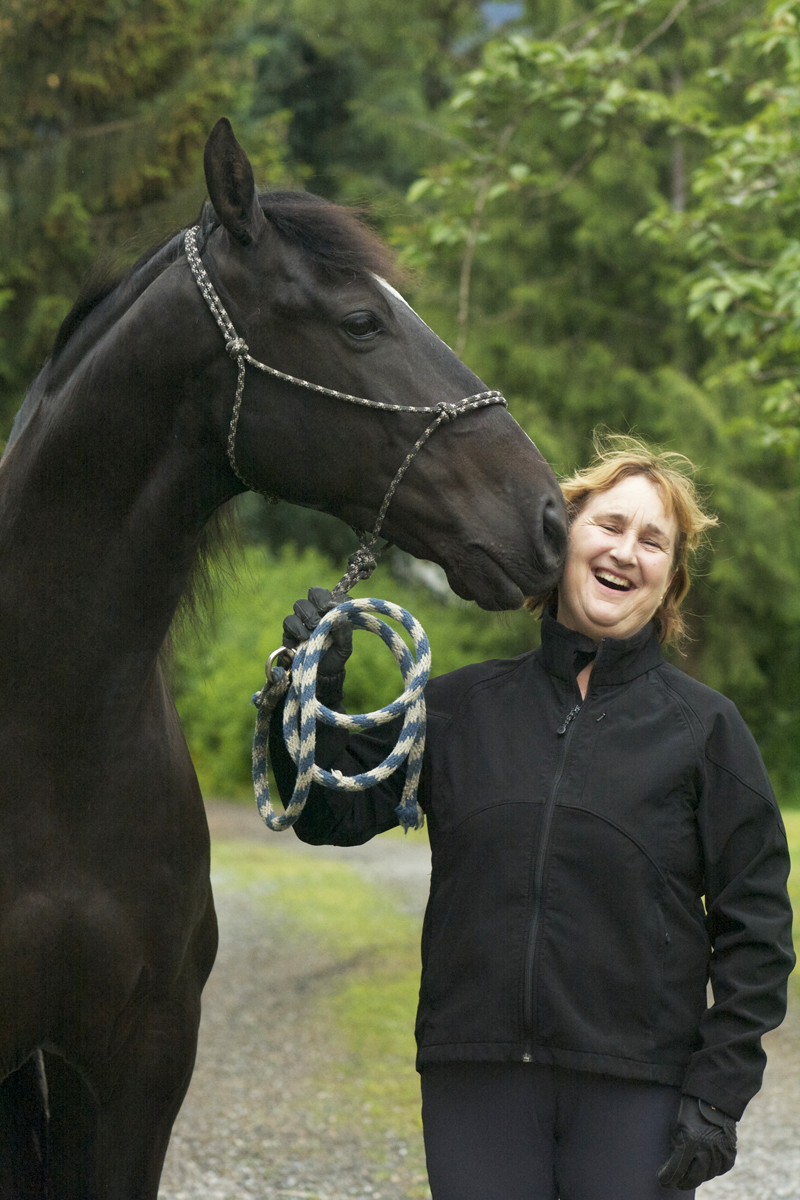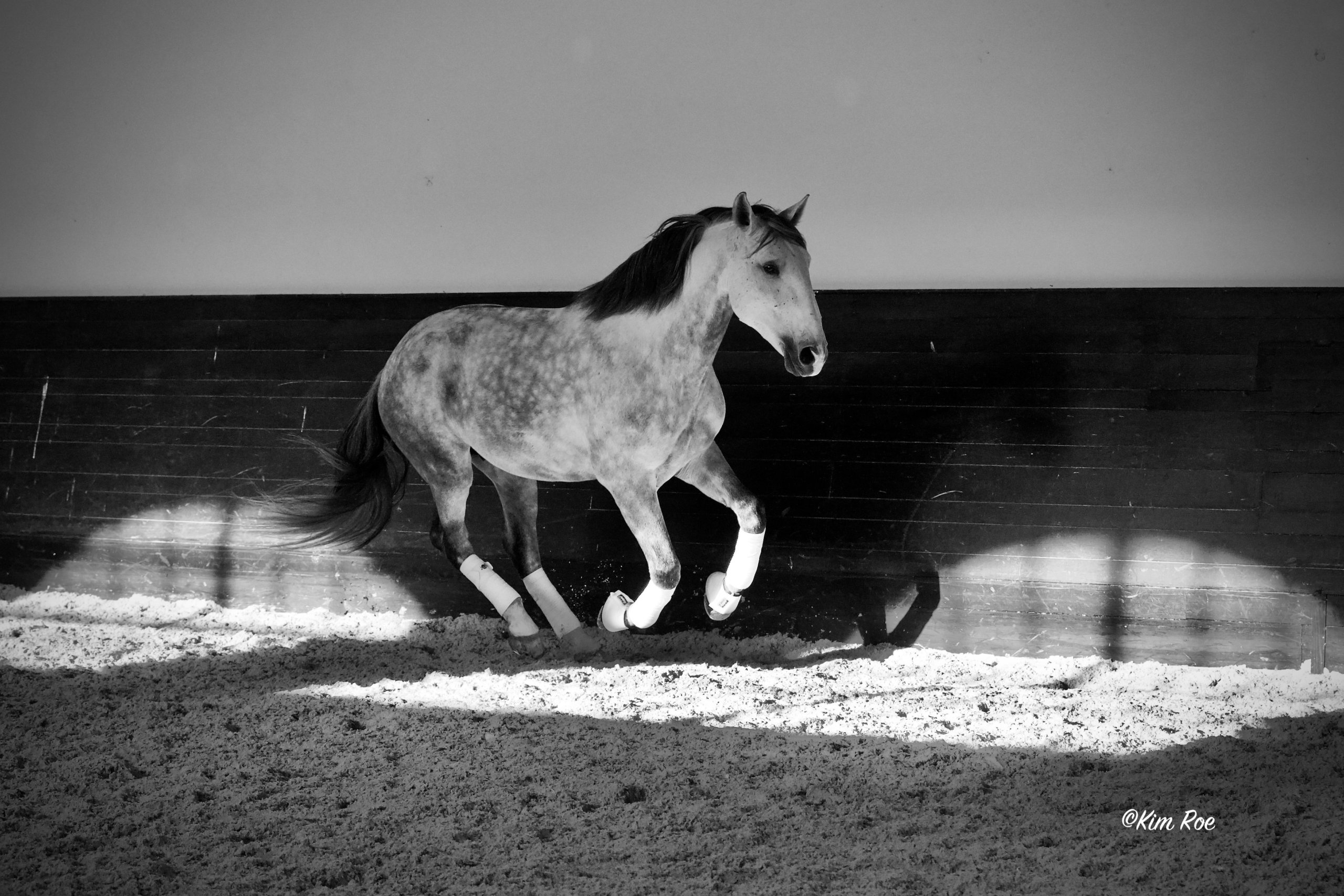“Rhythm is the term used for the characteristic sequence of footfalls and timing of a pure walk, pure trot, and pure canter. The rhythm should be expressed with energy and in a suitable and consistent tempo, with the horse remaining in the balance and self-carriage appropriate to its level of training.” From the United States Dressage Federation Pyramid of Training www.usdf.org/EduDocs/Training/2019_POT_Brochure.pdf
When people come to me for riding lessons or horse training, I always ask them what they hope to learn or what they want their horse to get from the training.
Their answers are usually along the lines of how they want a more responsive, softer horse, or one who is lighter in the contact, more supple, straighter and more collected. Or they might say they want to learn how to jump from a consistent spot, ride fluid half-passes, or have clean, smooth flying changes. Rarely does anyone say, “I want my horse to have better rhythm.” Yet rhythm is the basic that all training achievements are built upon. Without rhythm horses won’t advance in their training and will be forever “green”. Riders need a clear understanding and feel for rhythm in order to develop a highly trained horse or ride more advanced movements.
What is Rhythm?
Horses’ gaits (walk, trot, canter) each have a distinct number of beats. The walk is a four-beat gait, the trot has two-beats, and the canter has three beats. For example, if you’re riding at the trot you can easily count, “one-two, one-two”. The horse’s legs in the trot move in diagonal pairs, making it easy to feel and “hear” the rhythm. (For the purposes of simplification in this article we won’t discuss other gaits like those produced by “gaited” horses such as Tennessee Walkers and Paso Finos, but those breeds’ unique rhythms must also be consistently maintained.)
To be a successful rider we must be able to feel the rhythm of each gait, like three separate songs we sing while we ride. Most of us can easily tell if we’re walking and our horse starts to trot or if we’re cantering and the horse breaks to a trot. Breaks of gait are a change in rhythm – although a drastic one. Rhythm problems range from a complete break of gait to moments of “lateral” walk, a four-beat canter, or irregularity such as the horse taking a bigger step with one hind leg than the other.
A few more terms:
- Stride is the completion of one set of beats, so a trot stride equals two beats, a walk stride is four beats, and a canter stride is three beats.
- Pace: In the United States we use the term “pace” to differentiate variations within a gait, such as collected trot, medium trot, or extended trot.
- Regularity is the purity of the gait and also speaks to soundness. An “irregular” trot might one where the horse is actually unsound, or it might just be unbalanced. Either way, the regularity of the rhythm is incorrect.
Tempo
Other than keeping the correct number of beats in each stride the most important part of maintaining the rhythm when we ride is tempo. Tempo is the rate of repetition of the strides. I like to tell my students that rhythm is the song; tempo is how fast I sing it. For instance, I should be able to set a metronome to my horse’s canter or trot and maintain that without having to hold the horse with my reins or keep pushing with my legs.
I can speed-up the tempo (to sing the song faster) or slow the tempo (sing more slowly). Tempo doesn’t necessarily translate into “speed” which is miles per hour. My horse can have a fast tempo if he’s trotting in place but his miles per hour is basically zero. A 17-hand Thoroughbred might have a slow tempo in his canter, but his miles per hour is high as he covers ground with his long strides.
Horses have an optimum tempo for their level of training. If you try to slow a young or green horse’s tempo too much, they will break gait or lose regularity, as they just aren’t strong enough to carry such a slow tempo. Conversely, if a horse is moving in a too-quick tempo, slowing it may lead to surprising relaxation.
How to Improve Rhythm and Tempo
It’s all about feel. Learning to feel a steady tempo and a correct tempo takes years of riding. Some people have a natural ability to do this, others attain it only after many riding lessons. Riding a horse with a steady tempo and pure rhythm helps to develop that feel as does a good human instructor.
Other Ideas:
- Use a metronome and change it up until you find a tempo for whichever gait you’re riding that seems easy to maintain.
- Ride to music. Try to post the trot to the beat of a favorite song, or songs, or count your canter strides every time your horse’s head goes down (the final beat of the canter stride). When you find music that “works” you’ll feel your horse become more supple and relaxed. Sometimes we need to ride the tempo faster than what we normally ride and sometimes we need to slow down. You might be surprised at what you discover.
Problems with maintaining the rhythm and tempo usually arise from balance, ambidexterity (one-sidedness) or soundness problems. All horses have balance and ambidexterity problems as soon as we put our weight on their backs and ask them to move in maneuvers we choose or ask them to carry us over uneven ground. They might be on the forehand or naturally lazy and sucked back (not forward).
All horses prefer to lean on one shoulder (such as they load their right front leg more than their left) and this can cause rhythm problems as well as soundness problems. Horses also prefer to push with one hind leg and trail the other.
There are many reasons your horse may struggle to maintain his rhythm. It’s the rider’s job to figure out what these basic issues are before moving on to more advanced training. It’s important to remember that as we demand more difficult work from our horses, rhythm issues will continue to crop up. Maintaining correct rhythm and a steady tempo is always our first job when we ride, even when working with an advanced horse or movements.

Kim Roe grew up riding on the family ranch and competed in Western rail classes, trail horse, reining, working cow, and hunter/jumper. She trained her first horse for money at 12 years old, starting a pony for a neighbor.
Kim has been a professional dressage instructor in Washington state for over 30 years, training hundreds of horses and students through the levels. In recent years Kim has become involved in Working Equitation and is a small ‘r’ Working Equitation judge with WE United.
Kim is the editor of the Northwest Horse Source Magazine, and also a writer, photographer, and poet. She owns and manages Blue Gate Farm in Deming, Washington where she continues to be passionate about helping horses and riders in many disciplines.

